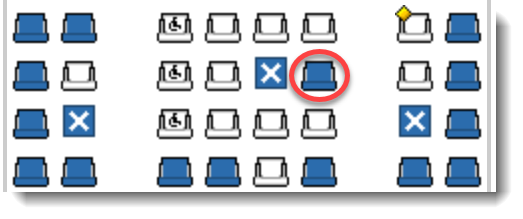Two different 'products' with the neighbour free seat and the soft block for high tier frequent flyers.
Neighbour free seat ultimately blocks off a seat in Altea - CM using a 'H' block (which is the check-in system), but the system that purchases the product is unrelated to Amadeus - It's plusgrade.
For the soft block or 'shadow' the system will always default to the highest tier to give them more 'comfort' based on an algorithm and PCV (process customer value - which is an Amadeus product but also enhanced with QF input) but if another high tier frequent flyer wants to take that seat (that was meant to be a shadow), then they are more than entitled to do that too, whereas a bronze or non-frequent flyer would even be able to see the seat vacant.
Let's say the flight is about 60% full and no one selected their seats prior to check-in, and everyone was a single traveller, theoretically, everyone would have an aisle or a window, with the middle seat being a 'shadow' (the system would not automatically anyone a middle). This is ultimately how the system is designed.
Now let's say 50% of people started adding in their frequent flyer numbers and had their seats preferences added in (all are bronze), now half the aircraft would have a theoretical seat block, where a non-frequent flyer now wouldn't be able to select their seat, even if the frequent flyer members haven't checked-in.
If the aircraft has no high tier travellers on the flight, then the lower tier would automatically now be able to get front row seats.
This is where the -80 comes into play, before the -80, the seat map is bound by set rules and is static, whereas inside the -80, it's set by the check-in system rules and is now flexible and dynamic and continually changing, based on people booking, changing flight, changing seats etc etc.


















